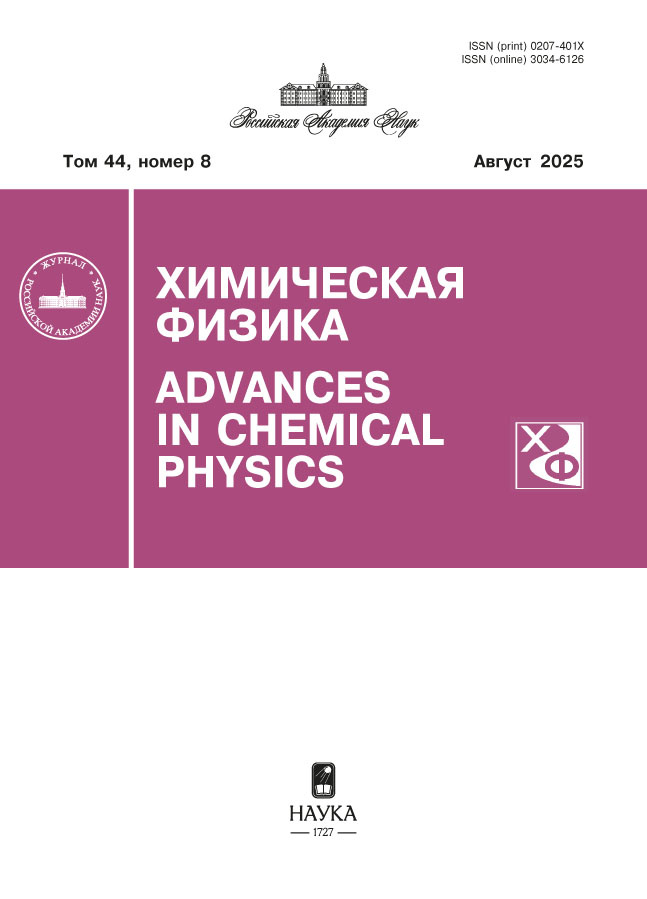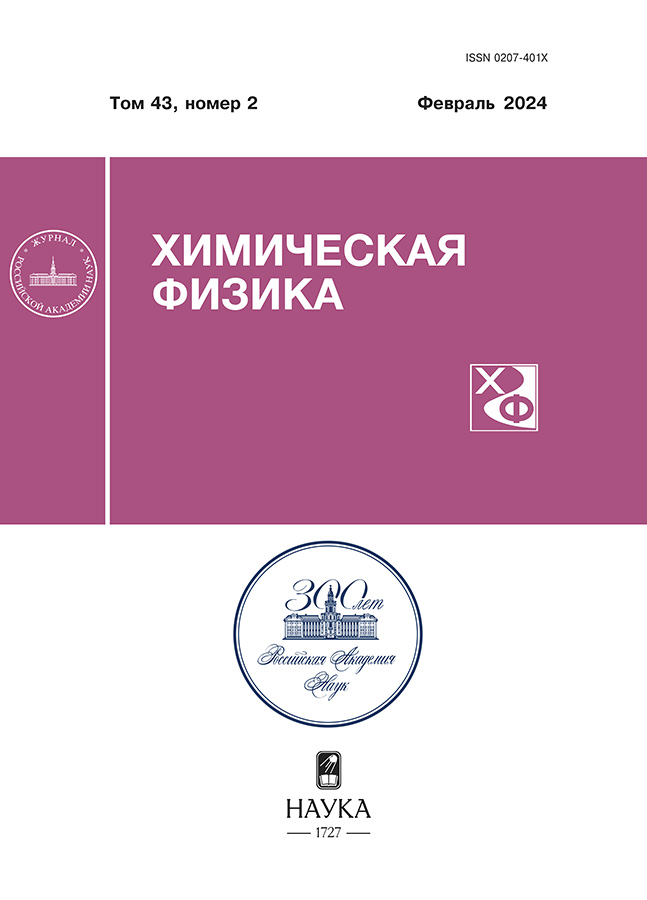Investigation of the behavior of dioxadet molecules in water by molecular dynamics simulation
- Authors: Yakush E.A.1,2, Kim A.V.1,2, Medvedev N.N.1
-
Affiliations:
- Voevodsky Institute of Chemical Kinetics and Combustion Siberian Branch of the Russian Academy of Sciences
- Novosibirsk State University
- Issue: Vol 43, No 2 (2024)
- Pages: 73-80
- Section: Chemical physics of biological processes
- URL: https://rjraap.com/0207-401X/article/view/674988
- DOI: https://doi.org/10.31857/S0207401X24020084
- EDN: https://elibrary.ru/WHLHBD
- ID: 674988
Cite item
Abstract
The behaviour of dioxadet molecules in water is studied by the molecular dynamics simulation. This substance has anti-cancer properties and is used in clinical practice. However, its properties have not yet studied at the molecular level. This paper presents the first attempt of such investigation. Parametrization of dioxadet molecule was carried out using different available services: ATB, SwissParam as well as AmberTools in a standard form and with the use of additional quantum-chemical calculations. The obtained models are compared with each other. The number of hydrogen bonds of the molecule with water was calculated, the analysis of hydrated water was carried out. It was shown that the dioxadet molecules in water tend to associate. All the models obtained show similar properties, but the quantitative characteristics differ noticeably. Further research is needed to select the best model. Molecule topology files are available for use.
Full Text
About the authors
E. A. Yakush
Voevodsky Institute of Chemical Kinetics and Combustion Siberian Branch of the Russian Academy of Sciences; Novosibirsk State University
Email: nikmed@kinetics.nsc.ru
Russian Federation, Novosibirsk; Novosibirsk
A. V. Kim
Voevodsky Institute of Chemical Kinetics and Combustion Siberian Branch of the Russian Academy of Sciences; Novosibirsk State University
Email: nikmed@kinetics.nsc.ru
Russian Federation, Novosibirsk; Novosibirsk
N. N. Medvedev
Voevodsky Institute of Chemical Kinetics and Combustion Siberian Branch of the Russian Academy of Sciences
Author for correspondence.
Email: nikmed@kinetics.nsc.ru
Russian Federation, Novosibirsk
References
- Bespalov V.G., Kireeva G.S., Belyaeva O.A. et al. // J. Chemotherapy. 2016. V. 28. № 3. P. 203; https://doi.org/10.1179/1973947815Y.0000000040
- Gershanovich M.L., Filov V.A., Kotova D.G. et al. // Vopr. Onkol. 1998. V. 44. №. 2. P. 216;
- Zhikhoreva A.A., Belashov A.V., Bespalov V.G. et al. // Biomed. Opt. Express. 2018. V. 9. №. 11. P. 5817; https://doi.org/10.1364/BOE.9.005817
- Fabian B., Sega M., Voloshin V.P., Medvedev N.N., Jedlovszky P. // J. Phys. Chem. B. 2017. V. 121. №. 13. P. 2814; https://doi.org/10.1021/acs.jpcb.7b00990
- Hummer G. // New J. Phys. 2005. V. 7. №. 1. P. 34; https://doi.org/10.1088/1367-2630/7/1/034
- Torrie G.M., Valleau J.P. // J. Comput. Phys. 1977. V. 23. №. 2. P. 187; https://doi.org/10.1016/0021-9991(77)90121-8
- Kim A.V., Shelepova E.A., Selyutina O.Y. et al. // Mol. Pharm. 2019. V. 16. №. 7. P. 3188; https://doi.org/10.1021/acs.molpharmaceut.9b00390
- Kim A.V., Shelepova E.A., Evseenko V.I. et al. // J. Mol. Liq. 2021. V. 344. P. 117759; https://doi.org/10.1016/j.molliq.2021.117759
- Zelikman M.V., Kim A.V., Medvedev N.N. // J. Struct. Chem. 2016. V. 57. № 5. P. 940–946. https://doi.org/10.1134/S0022476616050139
- Zelikman M.V., Kim A.V., Medvedev N.N., Selyutina O.Y., Polyakov N.E. // J. Struct. Chem. 2015. V. 56. № 1. P. 67–76. https://doi.org/10.1134/S0022476615010102
- https://pubchem.ncbi.nlm.nih.gov/compound/Dioxadet
- Malde A.K., Zuo L., Breeze M. et al. // J. Chem. Theory Comput. 2011. V. 7. № 12, P. 4026; https://doi.org/10.1021/ct200196m
- Zoete V., Cuendet M.A., Grosdidier A., Michielin O. // J. Comput. Chem. 2011. V. 32. № 11. P. 2359; https://doi.org/10.1002/jcc.21816
- Case D.A., Cheatham III T.E., Darden T. et al. // Ibid. 2005. V. 26. №. 16. P. 1668; https://doi.org/10.1002/jcc.20290
- Berendsen H.J.C., Postma J.P., van Gunsteren W.F., Hermans J. // Dordrecht: Springer, 1981. P. 331; https://doi.org/10.1007/978-94-015-7658-1_21
- Abraham M.J., Murtola T., Schulz R. et al. // SoftwareX. 2015. V. 1. P. 19; https://doi.org/10.1016/j.softx.2015.06.001
- Bussi G., Donadio D., Parrinello M. // J. Chem. Phys. 2007. V. 126. № 1. P. 014101; https://doi.org/10.1063/1.2408420
- Nosé S. // J. Chem. Phys. 1984. V. 81. №. 1. P. 511; https://doi.org/10.1063/1.447334
- Voloshin V.P., Medvedev N.N. // J. Struct. Chem. 2021. V. 62. № 5. P. 692–703. https://doi.org/10.1134/S002247662105005X
- Shelepova E.A., Ludwig R., Paschek D., Medvedev N.N. // J. Mol. Liq. 2021. V. 329. P. 115589; https://doi.org/10.1016/j.molliq.2021.115589
Supplementary files

Note
Х Международная конференция им. В.В. Воеводского “Физика и химия элементарных химических процессов” (сентябрь 2022, Новосибирск, Россия).














